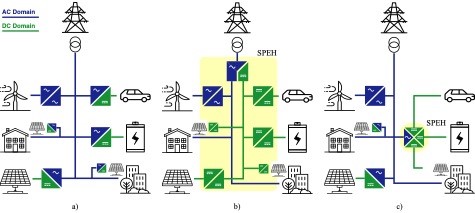SPEH4EU
In the past few decades, the European Union (EU) has been pushing for the transition towards a more integrated energy system and has firmly committed to achieving climate neutrality by 2050. To realize these objectives, the EU has introduced directives focused on comprehensive decarbonization across all sectors of the economy. The primary focus is creating a circular energy system with energy efficiency as its core principle. As a result, the EU calls for innovative approaches to promote energy efficiency both socially and economically, enhance synergies between energy infrastructures, and adapt energy markets and infrastructure to accommodate a more intricate, integrated energy system.
One of the potential solutions that may play a vital role in this perspective is the concept of energy communities (EC). ECs have the potential to amplify the visibility of renewable energy projects, attracting private investments for a clean energy transition. Additionally, ECs provide an opportunity for energy infrastructure enhancements, starting from the lower level of the energy-dispatching chain. The energy communities can be established in residential or industrial buildings or their aggregations, where the widespread adoption of renewable sources such as photovoltaic (PV) installations, electric vehicle (EV) charging stations, and energy storage systems like batteries (BESS) and hydrogen-electrolyzers (H2E) enable the design and implementation of circular energy systems.
Within these energy infrastructures, the smart power energy hub (SPEH) plays a pivotal role in facilitating the growth and development of energy communities. SPEHs are strategically located at the interconnection point between the power distribution line and the EC. SPEHs are equipped with electronic power converters (EPCs) to interconnect and manage various energy sources, storages, loads, and even ac and dc microgrids.

Figure 1: Smart power energy hub (SPEH) concept.
This project aims to investigate the applications of SPEHs in low-voltage scenarios, focusing on aspects such as their architecture, control systems, and the services they can provide to both ac and dc grids. The research will begin by analyzing several topologies from existing literature to determine the most suitable candidate for serving as a SPEH in the selected test case. For instance, multi-port converters (MPC) and back-to-back converters (BTB) are intrinsically equipped with both ac and dc ports, offering higher power density and efficiency compared to sparse ac/dc and dc/dc structures. However, the specific mission profile at each connection of the SPEH must be considered during the optimization process.
Power electronics techniques and control algorithms based on artificial intelligence will be explored to ensure the optimal and financially rewarding functioning of energy communities. Market trends will be factored into the management of EC, enabling regular updates and forecasting of the mission profile of energy storage systems. Moreover, the deployment of power-electronics-based loads, such as EV charging stations, and renewable sources requires advanced control features and multi-agent considerations that can be facilitated through reinforcement learning and model predictive control techniques.

Figure 2: Architectures of the traditional low-voltage grid and SPEH-based grid. a) traditional low-voltage ac-grid, b) SPEH with separated ac and dc domains, c) SPEH limited to dc-resources.
PUBBLICAZIONI:
Abstract: Isolated multi-port converters offer the ability to connect multiple sources and loads operating at different power and voltage levels at their ports, providing galvanic isolation and shared magnetics as benefits. Nevertheless, challenges are present in these converters, primarily due to ports coupling, a high number of modulation variables, and the overall modeling complexity. This paper explores the operation of the dc-dc quad-active bridge converter (QAB) and introduces an optimization approach using an online model-free four-dimensional ripple correlation control (4D-RCC). A fundamental component analysis (FCA) of the QAB is conducted first, resulting in a decoupling matrix that ensures effective closed-loop control for each port independently. Subsequently, the 4D-RCC method is applied to the QAB, allowing online optimization of the converter’s overall efficiency. The validation of these analytical findings and the optimization strategy is presented through PLECS simulation results and experimental results obtained from a converter prototype rated 5kW.
keywords: {Optimization;Bridge circuits;Table lookup;Seaports;Phase modulation;Voltage control;Matrix converters;Isolated multi-port converter;quad-active bridge (QAB);multi-dimensional ripple correlation search},
URL: https://ieeexplore.ieee.org/stamp/stamp.jsp?tp=&arnumber=10488381&isnumber=7098407






